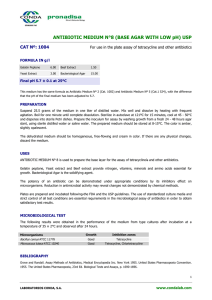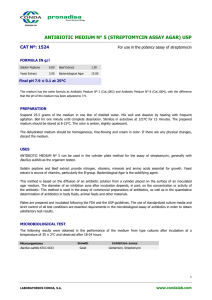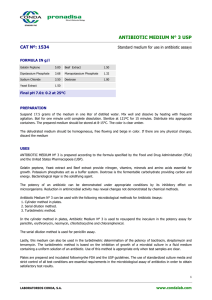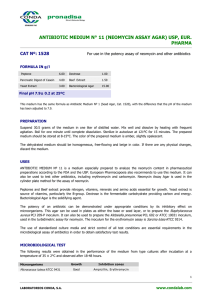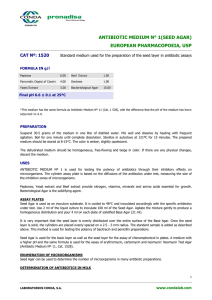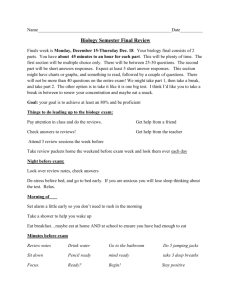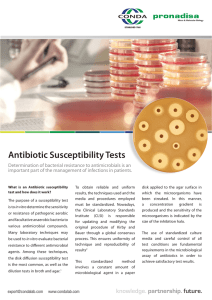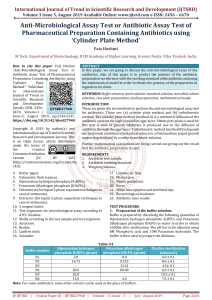ANTIBIOTIC MEDIUM N°2 (BASE AGAR) USP CAT Nº: 1002
advertisement
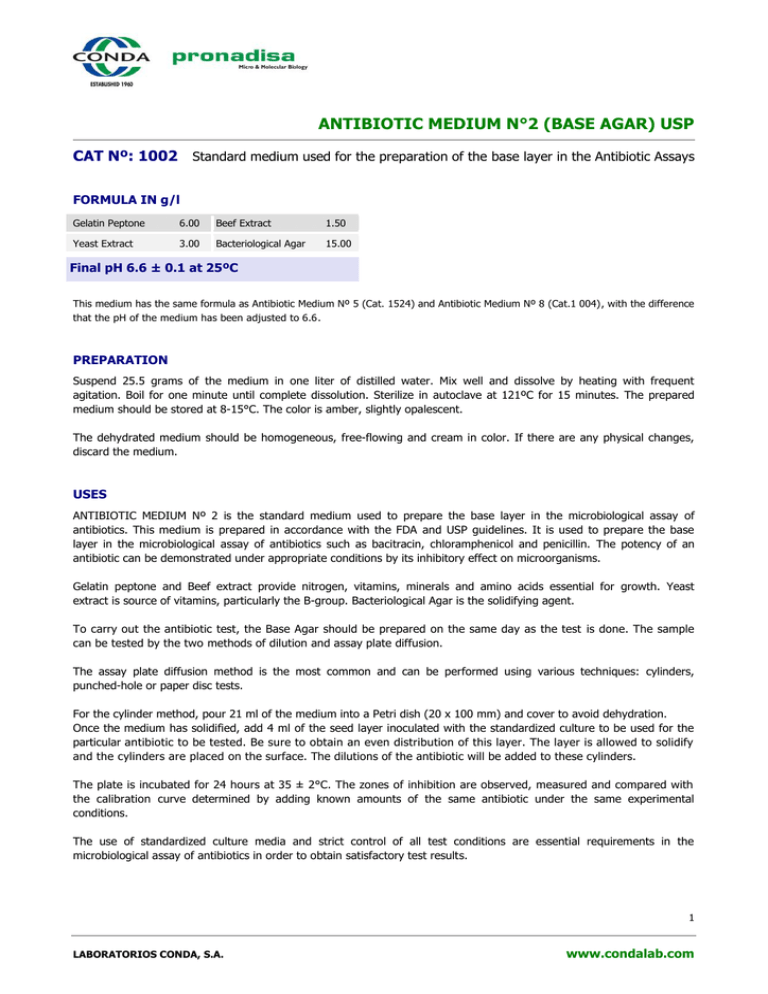
ANTIBIOTIC MEDIUM N°2 (BASE AGAR) USP CAT Nº: 1002 Standard medium used for the preparation of the base layer in the Antibiotic Assays FORMULA IN g/l Gelatin Peptone 6.00 Beef Extract 1.50 Yeast Extract 3.00 Bacteriological Agar 15.00 Final pH 6.6 ± 0.1 at 25ºC This medium has the same formula as Antibiotic Medium Nº 5 (Cat. 1524) and Antibiotic Medium Nº 8 (Cat.1 004), with the difference that the pH of the medium has been adjusted to 6.6. PREPARATION Suspend 25.5 grams of the medium in one liter of distilled water. Mix well and dissolve by heating with frequent agitation. Boil for one minute until complete dissolution. Sterilize in autoclave at 121ºC for 15 minutes. The prepared medium should be stored at 8-15°C. The color is amber, slightly opalescent. The dehydrated medium should be homogeneous, free-flowing and cream in color. If there are any physical changes, discard the medium. USES ANTIBIOTIC MEDIUM Nº 2 is the standard medium used to prepare the base layer in the microbiological assay of antibiotics. This medium is prepared in accordance with the FDA and USP guidelines. It is used to prepare the base layer in the microbiological assay of antibiotics such as bacitracin, chloramphenicol and penicillin. The potency of an antibiotic can be demonstrated under appropriate conditions by its inhibitory effect on microorganisms. Gelatin peptone and Beef extract provide nitrogen, vitamins, minerals and amino acids essential for growth. Yeast extract is source of vitamins, particularly the B-group. Bacteriological Agar is the solidifying agent. To carry out the antibiotic test, the Base Agar should be prepared on the same day as the test is done. The sample can be tested by the two methods of dilution and assay plate diffusion. The assay plate diffusion method is the most common and can be performed using various techniques: cylinders, punched-hole or paper disc tests. For the cylinder method, pour 21 ml of the medium into a Petri dish (20 x 100 mm) and cover to avoid dehydration. Once the medium has solidified, add 4 ml of the seed layer inoculated with the standardized culture to be used for the particular antibiotic to be tested. Be sure to obtain an even distribution of this layer. The layer is allowed to solidify and the cylinders are placed on the surface. The dilutions of the antibiotic will be added to these cylinders. The plate is incubated for 24 hours at 35 ± 2°C. The zones of inhibition are observed, measured and compared with the calibration curve determined by adding known amounts of the same antibiotic under the same experimental conditions. The use of standardized culture media and strict control of all test conditions are essential requirements in the microbiological assay of antibiotics in order to obtain satisfactory test results. 1 LABORATORIOS CONDA, S.A. www.condalab.com MICROBIOLOGICAL TEST The following results were obtained in the performance of the medium from type cultures after incubation at a temperature of 35 ± 2°C and observed after 18 - 24 hours Growth Inhibition zones Staphylococcus aureus ATCC 6538 Good Methicillin, Dicloxacillin Micrococcus luteus ATCC 10240 Good Bacitracin Staphylococcus epidermidis ATCC 12228 Good Novobiocin Microorganisms BIBLIOGRAPHY Grove and Randall. Assay Methods of Antibiotics, Medical Encyclopedia Inc. New York 1955. Unit ed States Pharmacopoeia Convention. 1955. The United States Pharmacopoeia, 23rd Ed. Biological Tests and Assays, p. 1690-1696. The United States Pharmacopoeia Convention, Rockville, Md. USP STORAGE 25ºC Once opened keep powdered medium closed to avoid hydration. 2ºC 2 LABORATORIOS CONDA, S.A. www.condalab.com
